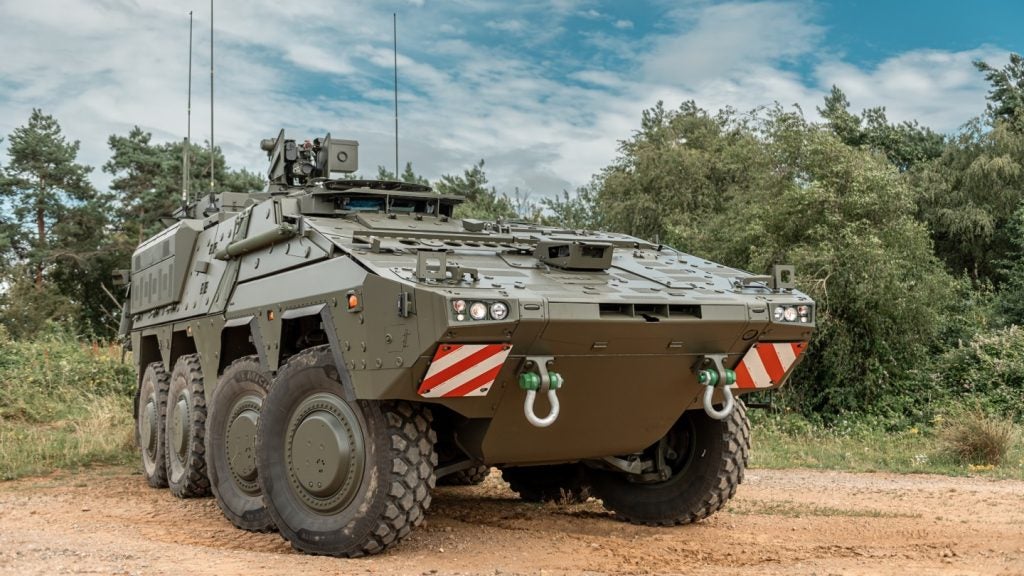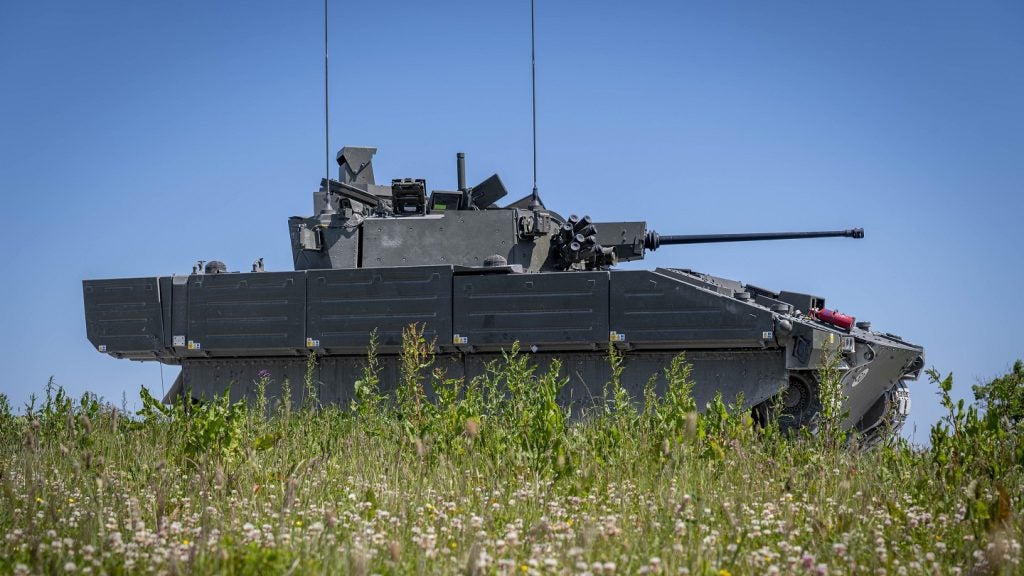
Learn how APS Systems’ advanced radar technology attempts to change counter-drone solutions, safeguarding nations and forging international partnerships.
In an evolving world where security challenges have reached unprecedented heights, APS Systems, a Polish company based in Gdynia, is safeguarding nations with radar technology. Harry McNeil’s interview with Arun Arumugam, Sales Director for APS Systems, unveils the company’s role in global security.
How well do you really know your competitors?
Access the most comprehensive Company Profiles on the market, powered by GlobalData. Save hours of research. Gain competitive edge.

Thank you!
Your download email will arrive shortly
Not ready to buy yet? Download a free sample
We are confident about the unique quality of our Company Profiles. However, we want you to make the most beneficial decision for your business, so we offer a free sample that you can download by submitting the below form
By GlobalDataArun Arumugam, Sales Director for APS Systems (AA): Advanced Protection Systems, APS is a Polish company. We’re based in Gdynia, in Poland. We are radar specialists. The company is about eight years old, and we have grown rapidly in the last 18 months. We are suppliers of counter-drone technology.
As radar specialists, we have our suite of radars called FIELDctrl radars, which are impressive and effective in identifying low and small aerial targets. They will reliably track them and instantly classify whether the aerial target is a bird or a drone.
By providing this information to the operator, the operator can decide whether to use an effective, soft or hard kill to take away the threat. Traditionally, drones are used for recreational purposes, but as you know, from the Ukraine war, drones have been used for very harsh purposes. They have very malicious intent and can take out critical assets, posing a huge threat to human lives.
As a result of this, we have developed a suite of advanced radars which will provide effective detection and classification of all classes of UAVs. We’re talking about class one, typically like the DGI drones at the radar cross-section of 0.01 square meters at a minimum distance of three kilometres.
Of course, you’re looking at this particular reader, which is mounted on the wall, which is our ultra radar that was revealed and then launched at MSPO in Poland in Kielce last week, and this particular radar, for example, will go up to detection and classification range as a minimum of six kilometres.
Our SKYctrl system comes in a number of different configurations. We’ve got this SkyctrlS, a portable configuration. It’s typically for light infantry for tactical operations.
Then, you progress on to the next level, a mobile system, which can be mounted on a mast or even fixed on a fixed mast, depending on what the clients are using. It can be put on a vehicle, but the vehicle needs to be static when you’re using the radar.
Or you have a more sophisticated type of deployment, like a containerised version, which the Polish Armed Forces currently use. Moving to the next level up, we have a partnership with MSI Defense Systems, a company based in Norwich.
We have, for example, integrated our SKYctrl system with their 30 mm Mark 44 Bushmaster chain gun, which gives you an elevated capability to use more architectures against threats.
HM: Which countries are deploying this hardware and software?
AA: Okay, so I can only mention the ones I’m allowed to mention. First and foremost, it is sufficient to say that this system is already being used in Ukraine. It is battle-proven, and the other thing that APS are immensely proud of is the fact that our system SKYctrl has already been integrated within the Polish air defence system, and as you know, the Polish concept for air defence system is very much the major concept for air missile defence system, so we are very much integrated within the Polish armed forces, we’re very proud of that.
We are also making headway into other regions in the Middle East and Asia. As I mentioned, although the company has been around for about eight years, we have dedicated a lot of our effort to producing the best possible radar that is out there in the market today, and we are very proud of that.
We are seeing the tangible benefits of those efforts, but as I mentioned, the company has rapidly grown over the last 18 months, and that has, in part, been due to the Russian invasion of Ukraine, and that has somewhat given us the impetus to grow and start supplying this really valuable technology to those who most need it.
HM: APS has mentioned a possible international partnership announcement. Can you share any insights or details regarding this partnership?
AA: Yes, of course, to an extent I can. As mentioned, we partnered with MSI Defense Systems, a reputable British company in Norwich. We are immensely proud of that partnership. We think that that partnership could allow us to enter new markets and access new clients looking for complex systems with hard and soft pedal effectors. The SKYctrl system fits in within that counter UAS system supplied with a soft kill effector. Now, we are able to offer a much more comprehensive system. We are exploring new markets, and we believe that those will grow over the coming months. We are very proud, grateful, and honoured to work with them.
HM: Could you elaborate on the significance and impact of these deployments in Ukraine?
AA: Yes, I think it has been a big game-changer for them. On the battlefield, you’re up against so many different things, and of course, the Ukraine war has demonstrated the heights at which drones can go.
It’s easy to acquire a drone, and it’s not so difficult for a few £100 a couple of £1000 pounds to equip it with some serious kinetic capability. You’ve got flying drones that act like bombs. You’ve got drones that have kinetic capability to take out assets. It’s the best system that the units have ever experienced.
If you imagine, they’ve got a finite amount of resources. They’ve got a finite amount of resources in terms of ammunition to use, and if you’re looking at a threat, and if the operator has to make a decision, is this a drone or a bird? Should I shoot it down or not? And you shot it down using ammo. They’re looking at 10s of 1000s of shooting down before acquiring our system. And that figure now goes down to a few hundred. You know that that is a big, big, big difference.
HM: The website mentioned using AI and machine learning for instant classification. How does AI play a role in distinguishing between different flying objects?
AA: Effectively, it comes down to the radar cross-section of what targets you see and building that credibility, building that information and using that as an experience within the software.
The software will see that, it will classify, and then it will realise over a period of time because it’s a self-learning system, as far as the user is concerned, that is entirely invisible to the user that the software does entirely by itself. The technology behind how it does that is proprietary, so I won’t be able to go into that.
However, it comes down to the radar cross section and being able to correlate that to historical classifications and map that to the environment, so there are so many different factors. It’s quite a complex algorithm.
HM: APS mentions expanding globally and having offices in Poland, the US, and the UK. How does this Global presence contribute to the effectiveness of your solutions, and what do potential clients expect regarding support access as follows?
AA: Everything comes out of Poland at the moment. In terms of what we want to do, we want to expand globally. We think that probably the most effective way to achieve this is through partnerships. So, for example, our presence in the UK has been bolstered up to a very elevated level now through the partnership with MSI.
In similar ways, we would like to have partnerships in other parts of the world. Ultimately, to grow APS, we need to be seen out there. The more partnerships we have give rise to opportunities for clients in those regions to access APS and the brilliant technology that comes with it.
Of course, in terms of long-term views, we have not closed our doors to transfer technology opportunities. We are very open for people to come and talk to us about partnerships and supplies in different countries through sales partners, agents, and distributors.
What we want to make sure we do is to ensure that the equipment goes to the right hands and to the hands of those who need it most.







